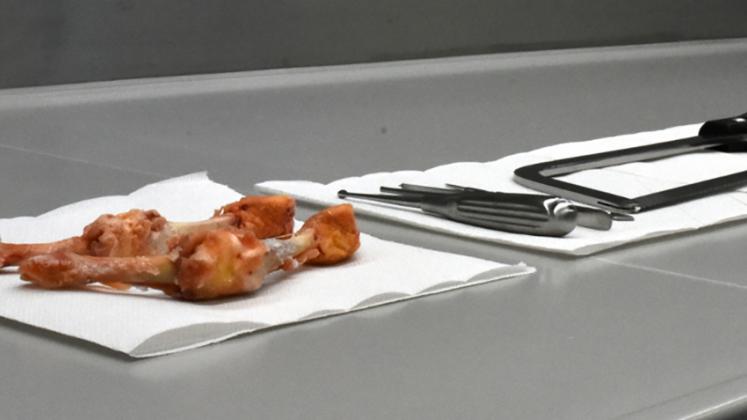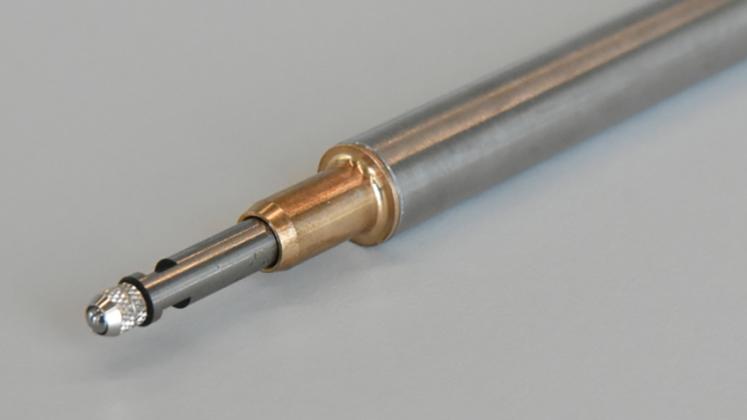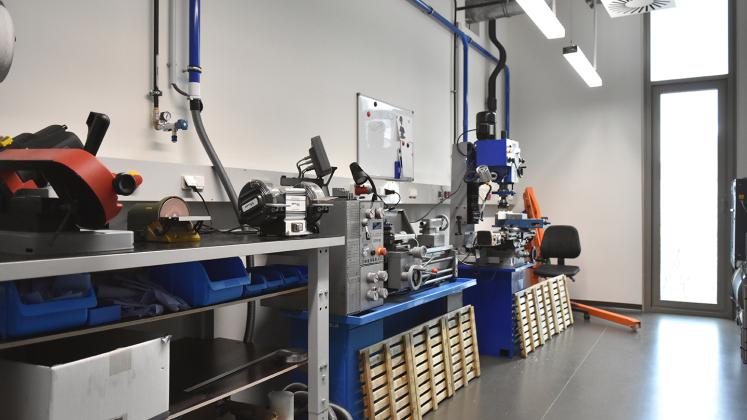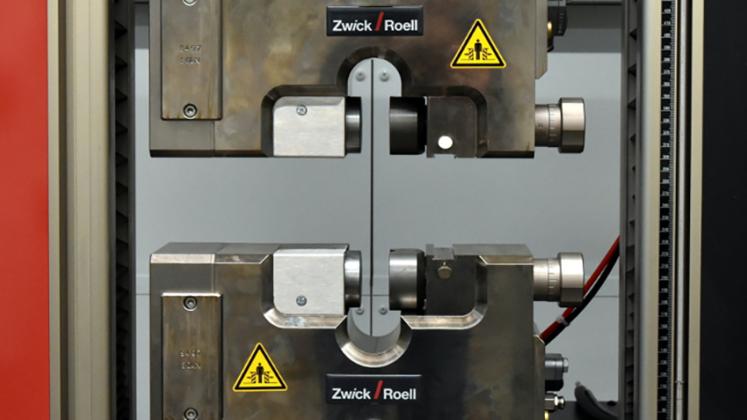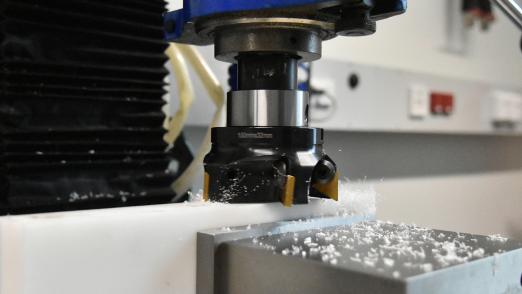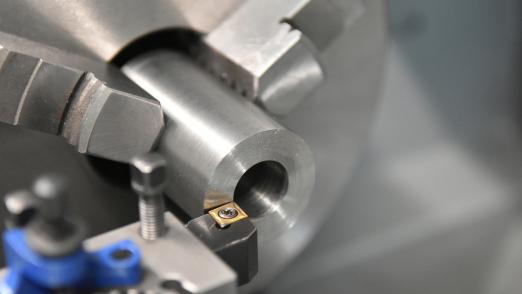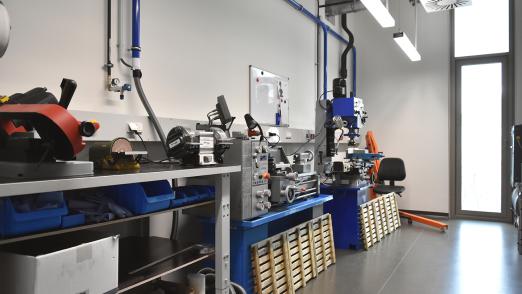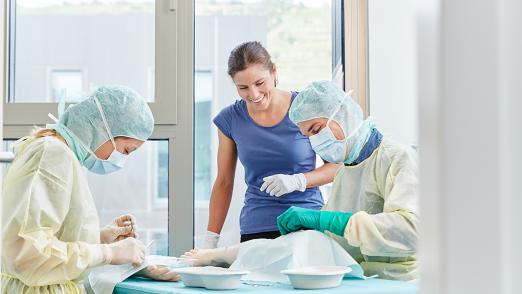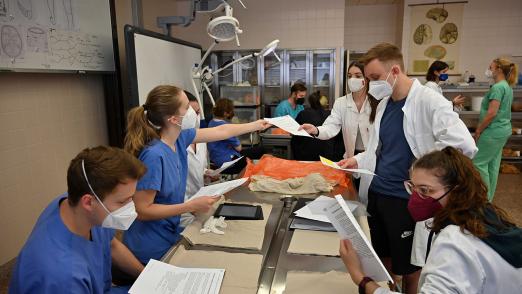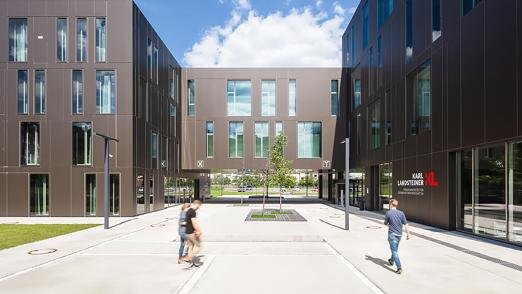Biomechanics Lab
The biomechanics laboratory (BMLAB) belongs to the Division Biomechanics (LINK) at the Karl Landsteiner University of Health Sciences.
The BMLAB focuses on investigating the mechanical- and morphological properties of biological materials. Special emphasis is laid on musculoskeletal tissues such as bone, tendon and ligament. The lab is equipped with top systems from the field of mechanical testing and imaging. The experimental means include:
- tensile testing (quasistatic and dynamic)
- optical strain- and displacement tracking
- micro computertomography (coming summer 2018)
- precision 3D scanning
- light microscopy
- 3D printing
- mechanical workshop
- sample preparation and storage of biological tissues
A predominant part of the equipment belongs to the Core Facility at the Campus Krems, and was funded by the Gesellschaft für Forschungsförderung Niederösterreich m.b.H. (GFF NÖ).
The BMLAB is open for cooperations and orders from 3rd parties - also from fields that are not related to biomechanics.
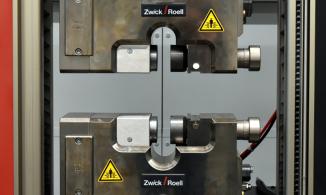
Zwick/Roell Z030
Quasistatic axial mechanical testing
The Z030 from Zwick/Roell is an electro mechanical axial testing system. The machine supports quasistatic tests up to 30kN. Flat and cylindrical samples can be gripped and aligned with the mounted pneumatic grips. Custom mounts can be manufactured in the workshop of the BMLAB.
The Z030 provides a versatile environment for all kinds of axial tests at lower displacement rates.
Spez. Wert
- Static force capacity+/- 30 kN
- Test space width max. 440 mm
- Test space height max. 1355 mm
- Test speed max. 1000 mm/min
- Position resolution 0,52982 nm
- Clamping width max. (standard clamps) 26 mm
- Clamps diameter (standard clamps) 49 mm
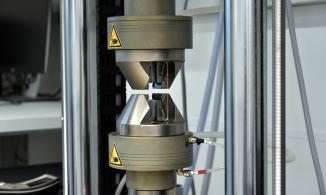
Zwick/Roell LTM-5
Dynamic axial mechanical testing
The LTM-5 from Zwick/Roell is an electric dynamic axial testing system which is based on the linear motor technology. The machine supports static and dynamic tests up to 5kN and 100Hz. Flat and cylindrical samples can be gripped and aligned with the mounted pneumatic grips. Custom mounts can be manufactured in the workshop of the BMLAB.
The LTM-5 provides the perfect environment for fatigue and lifetime testing.
Spec.
- Static force capacity +/- 3,5 kN
- Dynamic force capacity +/- 5 kN
- Test space width max. 460 mm
- Test space height max. 781 mm
- Piston length max. +/- 30 mm
- Frequency max. 100 Hz
- Speed range 1 mm/min - 1,5 m/s
- Position resolution +/- 2 µm
- Pressure in the clamping supply line max. 15 bar
- Clamp space 32 x 28 x 9mm (Raum zwischen Klemmkeilen)
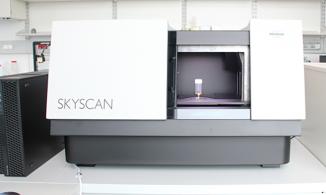
Bruker Skyscan 1173
Micro Computed Tomography (microCT)
The micro-computed tomography system Bruker Skyscan 1173 (uCT), is used for obtaining high precision geometry data of small to mid-sized samples in a nondestructive way. Inside a scanning chamber, hundreds of x-ray projections are taken from the sample. From these, a reconstruction algorithm is able to produce a 3D-volume representation of the sample. This so called 'voxel image' contains all features from the inside of the sample that were originally not visible from the outside. Depending on the sample size, resolutions down to 5 microns are possible.
The system is used for ...
- Nondestructive visualization of the 'inside' of a sample.
- Obtaining geometry data for FE-Simulation and 3D-Printing.
- Measuring length, area, volume of parts inside a sample.
- Obtaining morphometrical data (pore size distribution, fiber orientation, ...)
- Measuring calcification of tissue
Spec. Value
- X-ray source 40-130kV,8W ,<5 µm spot size
- X-ray detector distortion-free Flat Panel sensor 2240x2240 pixels,12-bit
- Maximum object size 140mm in diameter, 200mm in length (100-140mm scanning length)
- Spatial Resolution <4-5 µm detail detectability, 7-8 µm low-contrast resolution
- Reconstruction GPU-accelerated FDK reconstruction
- Radiation safety <1 µSv/h at 10cm from the instrument surface
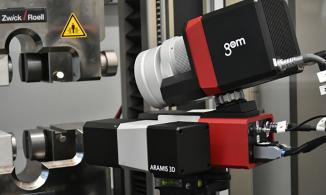
GOM Aramis
Optical 3D strain- and displacement tracking
The GOM Aramis is an optical measurement system for the 3D tracking of surface strains and/or individual markers on samples with high accuracy. For strain field measurements, the sample surface has to be covered with a speckle pattern. Measurement volumes can be changed incrementally by replacing the camera profile (metal part between cameras).
The system can be synchronized to measurements on the Z030 or LTM5 axial testing machines
Spec. Value
- Resolution max. 6M (2752x2200)
- Recording rate (full screen) max.25 Hz
- Recording rate (binning mode) max.44 Hz
- Facet size min.15x15 Pixel (2 Pixel overlap)
- Available camera profile(s) P 150mm
- Measurement distance for P 150mm 350mm
- Measurement volume for P 150mm 30x20x10mm to 150x120x90mm
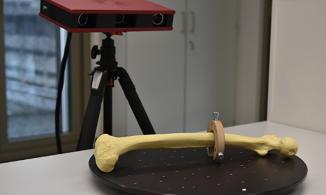
GOM Atos Core 300
Industrial 3D scanner for small to medium sized objects
The GOM Atos-Core 300 is a 3D scanning system which is optimized for the 3D virtualization of small to medium sized components. It can be used for reverse engineering. The system delivers high quality 3D polygon meshes in STL format with a position accuracy of a few microns.
A closed mesh can be created by stitching shots from different angles. In this case, reference markers on a rotation plate or on the specimen itself are needed.
Spec. Value
- Measuring area 300 x 230 mm
- Working distance 440 mm
- Sensor driver 5 million PPS
- Point spacing 0.12 mm
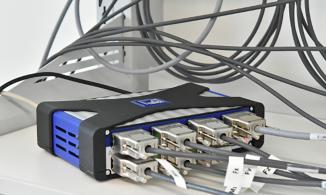
HBM QuantumX und Sensoren
Universal data acquisition system (DAQ)
The HBM QuantumX MX840B is a universal data aquisition module. Sensors and transducers based on 17 different sensor technologies can be connected to each of the 8 available channels.
The universal modules provide a 24-bit analog-to-digital converter, sample rates of 40 kS/s per channel, and active low-pass filters and are renowned for their high precision.
The amplifier can be directly connected to both Zwick testing machines to sync data acquisition.
- Accuracy class: up to 0.05%
- Sample rate per channel: up to 40 kS/s
Available Sensors in the BMLAB
- 1-S2M/10N-1 Single axis loadcell S2M/10N
- 1-S2M/100N-1 Single axis loadcell S2M/100N
- 1-S2M/500N-1 Single axis loadcell S2M/500N
- 1-U10M/5KN Single axis loadcell U10M/5kN
- 1-U10M/25KN Single axis loadcell U10M/25kN
- 1-WA/20MM-T Displacement sensor WA/20mm
- K-MCS10 6-axis Loadcell MCS10, Capacity: 5/5/25kN 350/350/350Nm (x-y-z)
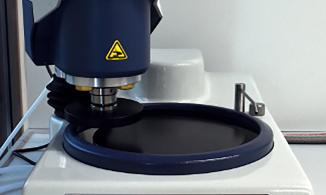
Preparation Devices
- Diamond bandsaw
- diamond circular saw
- polishing machine
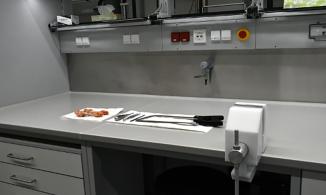
Sektion
A dissection table, including a cleanable vise enables for clean and tidy investigation-, dissection- and preparation of tissues. Vaccuum and pressurized air are supplied.
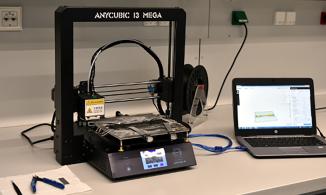
Anycubic I3 Mega
Fused deposition modeling (FDM) 3D Printer
The Anycubic I3 Mega is a cheap but useful 3D printer of the fused deposition molding technology. Thereby a thermoplastic filament is extruded through a heated nozzle on a 3-axis frame. The printer is used advantageously for prototyping parts as well as for complicated parts of experimental setups that cannot be manufactured by classical means.
Spec. Value
- Printing volume max. 210 x 210 x 205 mm
- Nozzle diameter 0.4 mm
- Printing Materials PLA, ABS, PETG, HIPS, Nylon, etc.
Workshop
Manufacturing precision parts from metal, plastics, ...
With a workshop at hand, test setups and adaptors can be manufactured in house. Adaptations and small manufacturing tasks can be made quickly and flexible. A standard lathe and standard milling machine alongside hand tools for metals and plastics are available.
Available machines Specs.
- Lathe Hans Schreiner S900 Digital Lmax = 900mm, Hmax=160mm
- Milling Machine Hans Schreiner ZA Y7045M2-HK- Digital Lmax = 585mm, Wmax=205mm
- CNC Router BZT PFX 700 Movement: Y720xX520xZ450mm


